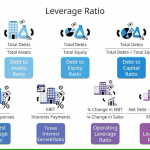Special purpose acquisition companies (SPACs) are a unique way for investors to capitalize on growing businesses.
A special purpose acquisition company (SPAC) is a company that is created specifically to acquire or merge with another firm and then use the proceeds from the IPO to finance the transaction.
Essentially, SPACs are IPO-enabled companies that allow investors to buy shares before a target company gets acquired.
In this article we’ll cover everything you need know about SPACs: how they work, what types of opportunities they offer, and whether or not there are any drawbacks for their participants.
What are Special Purpose Acquisition Companies?
An initial public offering (IPO) is a way for a company to go public and sell its shares to investors. It is similar to an auction, where the highest bidder wins shares of the company.
A special purpose acquisition company IPO typically allows investors to buy into a private company before it gets acquired by another, typically bigger, company.
Basically, SPACs are companies that raise funds through an initial public offering for the purpose of buying another company.
SPACs, often known as “blank check” companies, have been around for quite some time, but their popularity has recently skyrocketed.
There were 247 SPACs formed in 2020 with $80 billion invested, while a record 613 SPAC IPOs took place in 2021. Only 59 SPACs made their debut this year.
SPACs are referred to as “blank check corporations” because of the lack of information they present to potential IPO investors.
Before offering shares to the general public, SPACs go to underwriters and institutional investors. Goldman Sachs, Credit Suisse, and Deutsche Bank, among others, joined the ranks of SPAC investors during the boom years of 2020 and 2021.
The idea behind them is simple: They allow investors with a high risk tolerance to get into the private market, which can be difficult for retail investors who don’t have access to venture capital firms or other institutional investors.
SPACs are typically founded by investors or sponsors with experience in a specific market or industry, and they focus their efforts on transactions in that space.

SPACs are not like venture capital firms, which invest in startups and small businesses; instead they focus on acquiring established companies with strong growth prospects but limited access to capital markets due to their size or industry profile.
While the founders of a SPAC may have an acquisition target in mind, they typically keep that information under wraps until after the IPO has taken place.
The proceeds of a SPAC’s first public offering are placed in a trust account where they collect interest until they are needed to execute an acquisition. If an acquisition is not completed, the SPAC will return investors’ funds and dissolve.
The deadline for a Special Purpose Acquisition Company to complete an acquisition is two years. The trust’s interest income can be used as working capital for the SPAC. After making an acquisition, a SPAC will typically try to get listed on a major stock exchange.
This means that an investor can look at a SPAC as a type of investment vehicle that allows them to buy shares in an operating company before it goes public.
In other words, it can be an alternative to venture capital for raising money for startup companies–and it can be used as an investment tool for any type of business.
Most SPACs also offer preferred shares that guarantee dividends and have fixed maturity periods.
The dividend payments depend on how much money the company makes from its acquisitions and other business activities after it goes public; the total amount will depend on the type of agreement between investors and developers.
SPACs are typically formed as limited liability companies (LLCs), but they may also be incorporated as for-profit corporations.
In either case, SPACs are generally created to facilitate the acquisition of other companies in an industry that requires certain types of expertise or resources that the developer does not already possess.
SPACs can be used to acquire companies in a variety of industries and sizes. Some SPACs seek to make one major acquisition, while others are designed to do several smaller deals over time.
The timeline for a SPAC works like this: First, the SPAC forms as an LLC or corporation and lists itself on a public stock exchange.
Then it starts raising money from investors through an IPO. Once it has enough money, it buys its target company using debt financing. As soon as it does so, the stock will trade on exchanges and all investors will receive their shares of stock based on how many shares they bought during the IPO process.
In 2019, IPOs by SPACs brought in $13.6 billion. They raised more than four times as much as they did in 2016, which was $3.5 billion. In 2020, as much as $83.4 billion was raised through SPACs, and in 2021, as much as $162.5 billion was raised through SPACs, respectively.
There has been $9.6 billion invested into SPACs as of March 13, 2022.
What are the benefits of a SPAC?
SPACs can be useful for businesses thinking about going public. SPACs can shorten the time it takes to go public by several months compared to the six months or more that a traditional IPO can take.
Because to the short window of opportunity to initiate a deal, the target company’s owners may be able to negotiate a higher price when selling to a SPAC.
The target company has access to seasoned management and increased market exposure through an acquisition or merger with a SPAC sponsored by famous financiers and business executives.
On the other side of things, SPACs provide investors with a way to invest in companies before they go public.
In that way, SPACs are an alternative to traditional venture capital firms, which invest large sums of money into startup companies and usually take board seats on those boards.
SPACs allow you to get in on the ground floor of the next big thing without having any experience as an entrepreneur or investor yourself.
Many companies in 2020 opted out of traditional IPOs because to market volatility and uncertainty, which may have been sparked by the global COVID-19 pandemic. Half of all IPOs that year were SPACs.
What are the risks in investing in a SPAC?
A blank check company such as a SPAC is a publicly traded start-up with no working business model. Its purpose could be to launch a new firm or, more often, to combine with or purchase another company.
As such, Rule 419 of the Securities and Exchange Commission applies to corporations that issue blank checks because of the high risk they pose to investors.
The SEC often classifies stocks in blank-check companies as either penny stocks or microcap stocks. This is why the SEC has stricter regulations for public corporations.
For instance, before a corporate combination is finalized, shareholders must authorize it and the funds must be placed in an escrow account.
In addition, certain exemptions found in Regulation D of the Securities Act of 1933 cannot be used by these businesses. Offerings of up to $10 million are exempt from registering under Rule 504 of Regulation D within a 12-month period.
The SEC was unable to continue evaluating standard IPOs during the recent partial government shutdown, hence the popularity of SPACs surged.
Because the SEC permits corporations to make their own IPO registration effective if they are willing to create a defined IPO price at least 20 days before going public, SPACs were allowed to go public during this time without SEC permission or comment.
Notwithstanding the increased public awareness of SPACs during the period, investors in these newly public companies should be aware of the potential downsides. Some SPACs may provide investors with information on the industry in which they want to operate, but this is not always the case.
The SEC forbids corporations that issue blank checks from using Rule 504.
An individual who invests in a SPAC IPO does so with the expectation that the promoters will eventually acquire or merge with a suitable target company.
Nevertheless, because of a lack of information from the SPAC and lax regulation, individual investors run the danger of losing money on an investment that does not live up to its lofty claims.
Subpar Results
It is possible that the returns from SPACs won’t live up to the promises made during their advertising.
In September 2021, Goldman Sachs analysts noted that, of the 172 SPACs that had executed a deal since the beginning of 2020, the median SPAC had outperformed the Russell 3000 index from its IPO through transaction announcement.
Yet, after six months post-deal closing, the median SPAC underperformed the Russell 3000 index by 42%.
Up to 70% of SPACs that went public in 2021, according to a Renaissance Capital strategist, were trading at less than their $10 offer price by the end of the year.
This led to a general opinion that the SPAC bubble may be bursting, according to several market professionals who have noticed the negative trend.
Unfulfilled Promises
Investing in a SPAC carries the risk that the firm may not be able to complete an acquisition even if one is found. Industry estimates indicate that in 2022, more than 55 purported SPAC deals totaling tens of billions of dollars were scrapped, and another 65 SPAC sponsors went out of business.
A SPAC merger or acquisition could fall through for a variety of reasons.
The SPAC might miss its window of opportunity to make a timely acquisition. The management of the SPAC may reach this conclusion if it is unable to acquire a private firm that satisfies the SPAC’s investment criteria.
Management of the SPAC faces the risk that it will be unable to secure an advantageous acquisition price or structure.
It is possible that the SPAC won’t be able to raise enough money from the IPO to cover the cost of the acquisition. This may occur if there is insufficient demand for the SPAC among investors or if the market is adverse.
Ultimately, if the SPAC’s shareholders and/or regulators do not approve of the acquisition, the deal will fall through.
The structure of SPACs ensures that investors receive their whole investment back (generally $10 per share).
However, investors who buy shares at higher prices in anticipation of a deal closing risk losing money. Investors are not entitled to the market price at which SPAC shares are purchased, but only to their proportionate share of the trust account.
Prone to Scams
As of April 2021, SPACs must comply with new accounting standards released by the U.S. Securities and Exchange Commission (SEC), which has led to a precipitous drop in new SPAC filings from the historically high levels seen in the first quarter of 2021.
Since numerous celebrities, such as artists and professional athletes, had become heavily engaged in SPACs by March 2021, the SEC issued an Investment Alert urging investors not to base their decisions on the involvement of celebrities.
Due to higher levels of regulation and weaker-than-anticipated returns, SPACs fell out of favor by early 2022.

What are examples of SPACs?
The acquisition of Virgin Galactic by Richard Branson’s special purpose acquisition company garnered a lot of attention.
For $800 million, venture billionaire Chamath Palihapitiya’s SPAC Social Capital Hedosophia Holdings purchased 49 percent of Virgin Galactic before the business went public in 2019.
On July 22, 2020, Pershing Square Tontine Holdings, sponsored by Bill Ackman of Pershing Square Capital Management, raised $4 billion in its initial public offering, making it the largest SPAC ever.
Ackman had originally planned to liquidate the SPAC in August 2021, but as of 2022, negotiations were still ongoing.
Digital sports entertainment and gaming company DraftKings (DKNG), aerospace and space travel company Virgin Galactic (SPCE), energy storage innovation company QuantumScape (QS), and real estate platform Opendoor Technologies (OPEN) are some well-known examples of companies that have gone public via a merger with a SPAC.
How do you invest in a SPAC?
Privately held companies often have better opportunities, but most investors do not have access to their equity.
But thanks to SPACs, the general people can join forces with seasoned investors and VC firms. There are now exchange-traded funds (ETFs) dedicated to investing in special purpose acquisition companies (SPACs).
These funds often hold a variety of SPACs, from those that have recently gone public through a merger with a SPAC to those that are still looking for a suitable acquisition target. SPAC investments, like any other type of investment, carry varying degrees of danger, depending on the particulars.
Conclusion
Forming a special purpose acquisition company (SPAC) is one option for a privately held company looking to go public through an initial public offering.
Because they are formed without a specific acquisition goal in mind, SPACs are sometimes referred to as “blank check corporations.”
After the SPAC has collected enough funds from the IPO, it will look for and acquire a private firm to take public by way of a reverse merger.
Without going through the typical IPO procedure, the private company can now enter the public markets and obtain extra funds. SPACs were once a promising new alternative to traditional IPOs, but the market for them has dwindled in recent years.
Nonetheless, they remain an attractive option for investors who want to explore new opportunities in the investment market.





